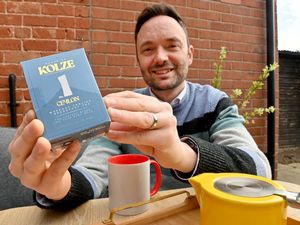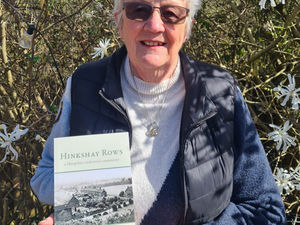Flashback 2010: When speed camera suffered spate of attacks
Flashback to 2010: Toby Neal looks back at spate of attacks on despised speed camera
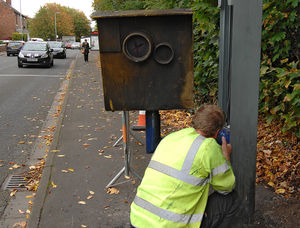
Burned, blackened and hated by many – this was an unmourned departure.
The speed camera at Bennetts Bank, Wellington, had been the very first fixed speed camera in the county.
For years it caught thousands of speeding motorists at Bennetts Bank which, the traffic experts asserted, was an accident blackspot.
And while other fixed speed cameras were to follow at various locations in Shropshire, for some reason the one at Bennetts Bank was particularly disliked and became a repeated target for vandals.
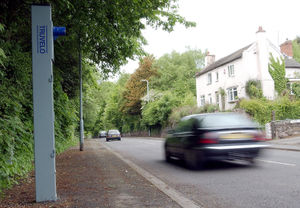
On October 18, 2010, it was removed by contractors working for West Mercia's Safer Roads Partnership. It had been out of action since July after being set on fire and was not replaced due to funding cuts.
According to Telford & Wrekin Council at the time, statistics had shown it had not proven as effective in terms of reducing accidents and casualties as other fixed cameras in the borough.
The decision not to replace it had also been influenced by changes in traffic patterns, following the installation of traffic signals at the Ketley Brook roundabout nearby.
Now you may be wondering whether, after the speed camera was removed, it made any difference either way.
If West Mercia Safer Roads Partnership is right, it had led to a reduction in speed on Bennetts Bank, which lasted long after the camera had disappeared.
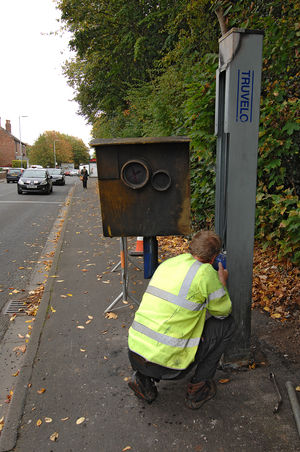
When Wellington town councillors complained in 2013 about renewed speeding there, a spokeswoman for the partnership said data in January that year showed 85 per cent of the traffic was travelling at, or below, the 30mph speed limit.
"The camera there had done the job it was intended for in bringing speeds and collisions down," she said.
The camera was a pilot scheme which, after a week's delay because of a technical hitch, came on line on April 15, 2003.
In its first three months it caught more than 3,000 speeding motorists, peaking at 86 a day in June, raising almost £200,000.
The partnership said the number of drivers breaking the speed limit had fallen by 47 per cent, while average speeds went down by four per cent.
Its operation was temporarily disrupted when, on May 17, just over a month after it had come on line, somebody beheaded it with a large industrial circular saw.
Police suspected the culprit was a disgruntled motorist, who was spotted in the act amid a shower of sparks and then fleeing the scene by passersby.
Immediately afterwards motorists continued to slow down but when they noticed the camera had disappeared many gave a thumbs up.
The speed camera was quickly restored, but its troubles were only just beginning.
Hundreds of motorists contacted the Shropshire Star by phone, letter and email to complain about it, claiming it was a "cash trap" and an unnecessary tax on motorists. Some refused to pay their fines.
In September 2003, the lens was sprayed with black paint by vandals. By December 2003, the camera had caught 5,571 speeding motorists.
Defending the camera against a continuing barrage of criticism, Trevor McAvoy, manager of the partnership, said the half-mile stretch of road between Ketley Brook roundabout and Regent Street had the worst record for injury accidents in Telford and beyond.
In a third attack, on June 12, 2005, it was set on fire in the middle of the night, causing thousands of pounds worth of damage.
Then, in the early hours of July 22, 2010, it was targeted for a fourth time, when vandals threw a tyre doused in petrol over the top of the camera and set it alight.
It was damaged beyond repair and the film inside was destroyed as well.
It was the end of the line and brought a close to this particular chapter of speed enforcement at Bennetts Bank.
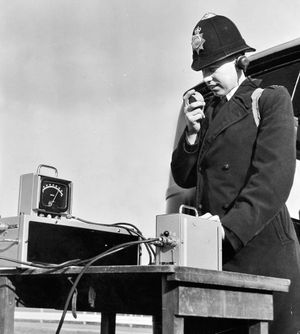
The continuing campaign to restrict the speed of motorists and improve safety continues, however, and is actually as old as motoring itself.
For instance, one of the first speeding offenders in the county must have been one Edward John Pennington, of Wolverhampton who, in 1898, appeared in court at Shifnal accused a driving a motor carriage at rates varying, according to the evidence, from 18 to 25 miles an hour.
He admitted speeding, but said it was not that fast and he had good brakes anyway. The speed limit at the time was 12mph.
Total fines and costs came to nearly £19, which was very stiff for the time, but as in those days only the super rich had cars, he could probably afford to pay up.



